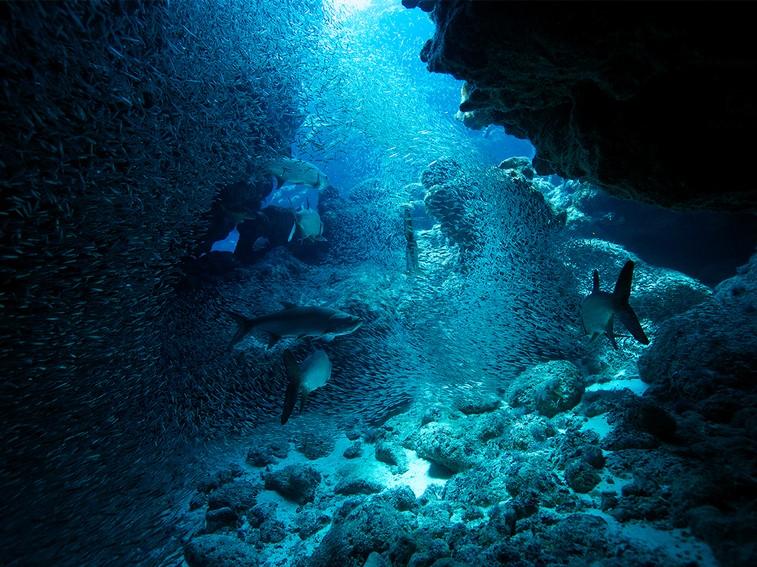


the Mid-Atlantic Ridge, the SW Indian Ridge and the Central Indian Ocean Ridge. When scientists have investigated soon after, fresh-looking basalt, plumes of hot chemical-laden water, and recently-killed marine organisms have been observed, indicating that an eruption almost certainly had occurred. The water to produce serpentine of the oceanic crust comes from the mantle. Mid-ocean ridges stretch for tens of thousands of miles through the oceans. We have never witnessed an eruption along a mid-ocean ridge, although a few times earthquake swarms have been detected along them (mainly by secret US Navy listening devices). Mid-ocean ridges are also the locations of many earthquakes, however, they are shallow and generally of small magnitude. We know that spreading occurs along mid-ocean ridges by two main lines of evidence: 1) the MORB right at the ridge crest is very young, and it gets older on either side of the ridge as you move away and 2) sediments are very thin (or non-existent) right near the ridge crest, and they thicken on either side of the ridge as you move away. MORB is by far the most common rock type on the Earth's surface, as the entire ocean floor consists of it. SHALLOW EARTHQUAKES AT DEPTHS LESS THAN 70 KM AT MID-OCEAN RIDGES AND NEARBY TRANSFORMS REFLECT THE CREATION OF THE. The lava produced at the spreading centers is basalt, and is usually abbreviated MORB (for Mid-Ocean Ridge Basalt). Either way, this is how the oceanic plates are created. A mid-ocean ridge (or mid-oceanic ridge) is an underwater mountain range, typically having a valley known as a rift running along its axis, formed by plate. This divergent boundary creates mountains, valleys like the famous rift valley, volcanoes, and sometimes earthquakes. Or, more likely, it is a combination of these two processes. The mid-ocean ridge is formed where two tectonic plates meet under the ocean. They occur where two of the plates that make up the Earths crust. These underwater mountains, or mid-ocean ridges, are formed from volcanic activity. But venture below and youll find a varied landscape that includes the deepest valleys and tallest mountains on Earth. Or, the lava intrudes to the surface and pushes the plates apart. When viewed from above, the wide-open sea is vast and flat. Here, the plates are pulled apart by convection in the upper mantle, and lava intrudes to the surface to fill in the space. There is uplifting of the ocean floor, which is caused due to the convection currents as it rises in the mantle which is beneath the oceanic crust and here it creates magma. This is sometimes considered to be one ~70,000 km-long volcano. A mid-ocean ridge also known as the mid-oceanic ridge is an underwater mountain range, which is formed by the action of plate tectonics. The compositions of materials erupted at these locations, dominantly mid-ocean ridge basalts (MORB's), have profound implications for the inner workings of the Earth's mantle, the construction of oceanic crust, and global plate tectonics. This is a map of the major oceanic spreading centers. Geological processes at the mid-ocean ridges are responsible for the bulk of the Earth's heat loss and volcanic activity.


 0 kommentar(er)
0 kommentar(er)
